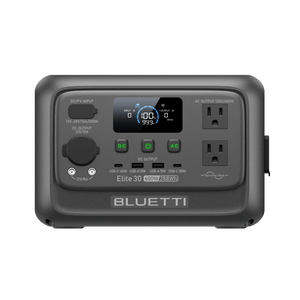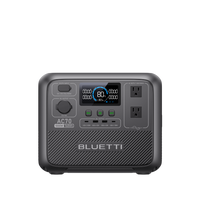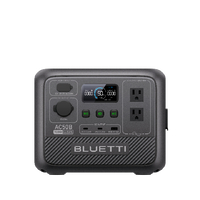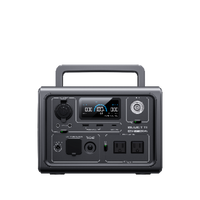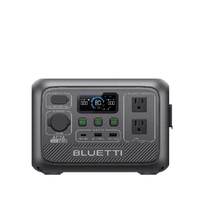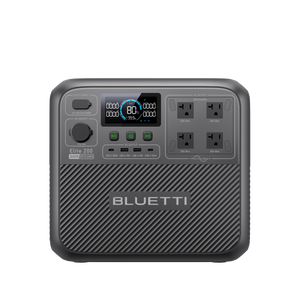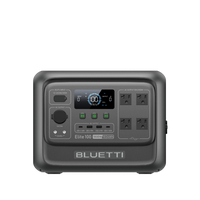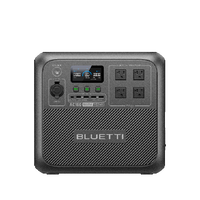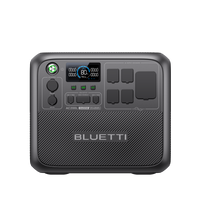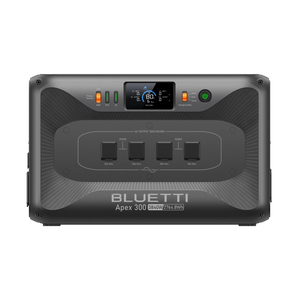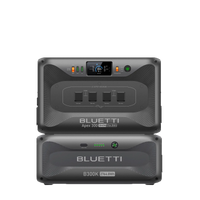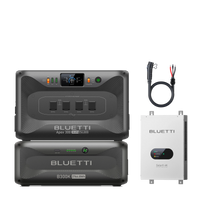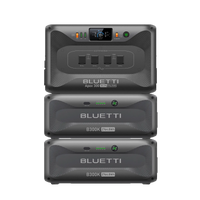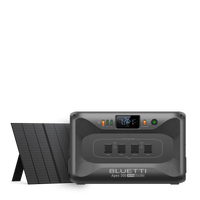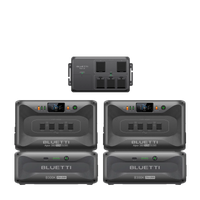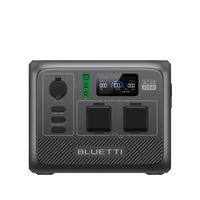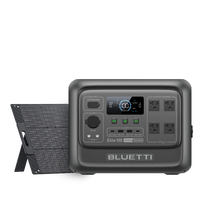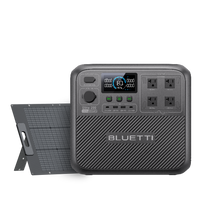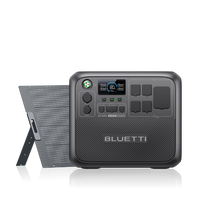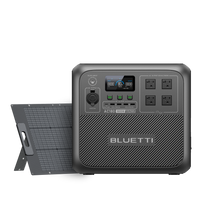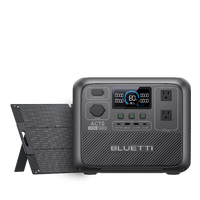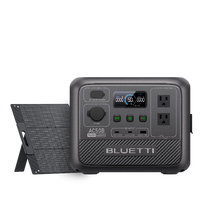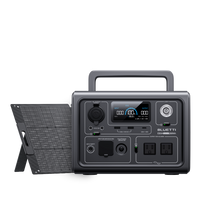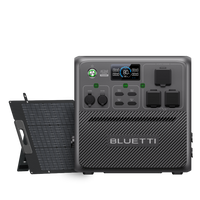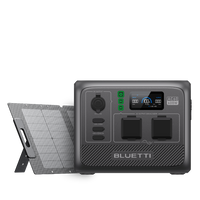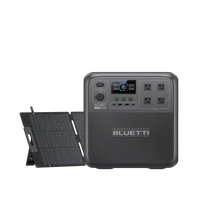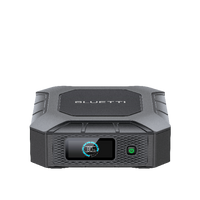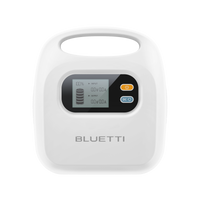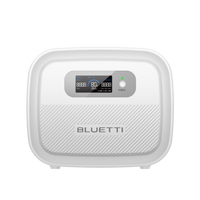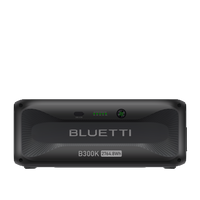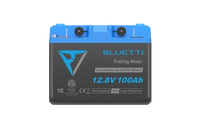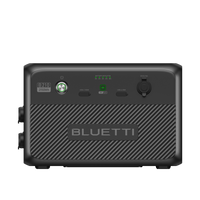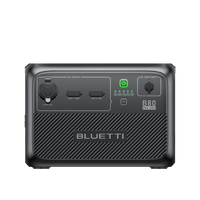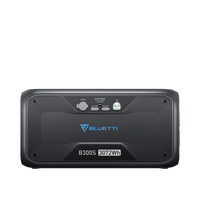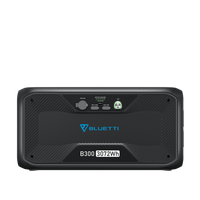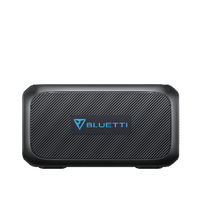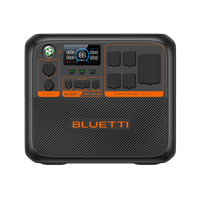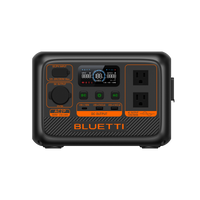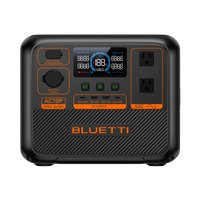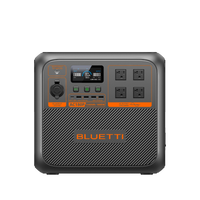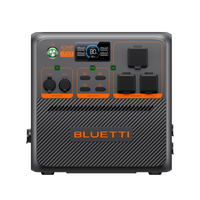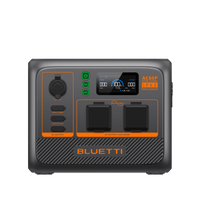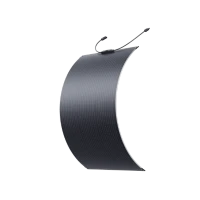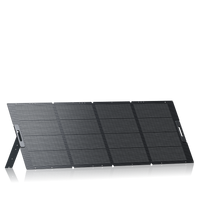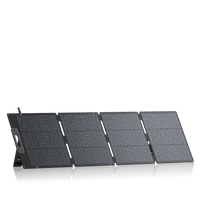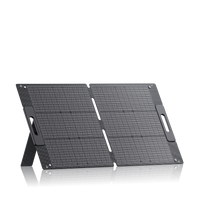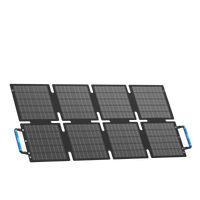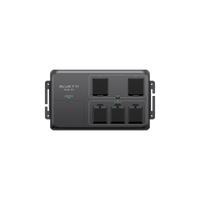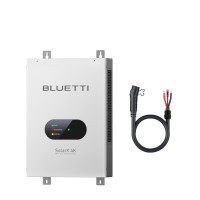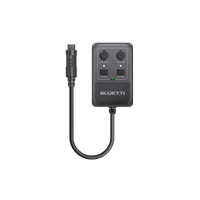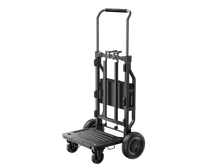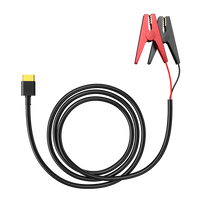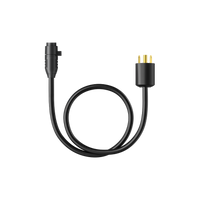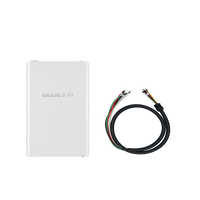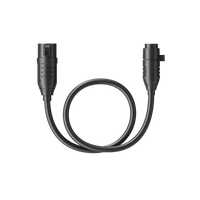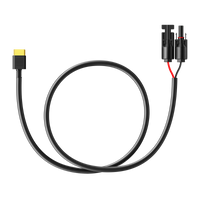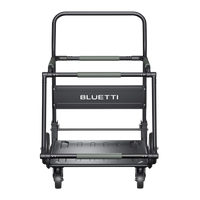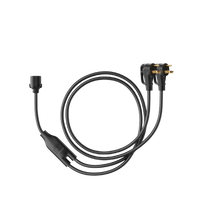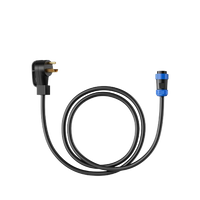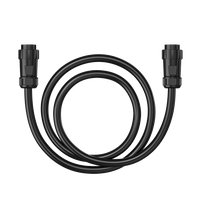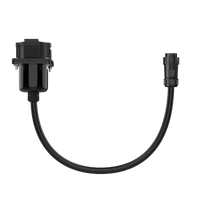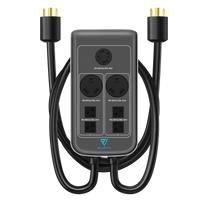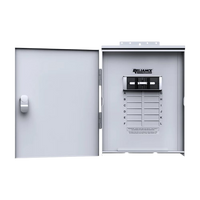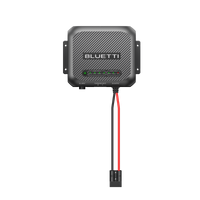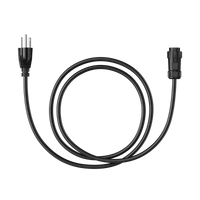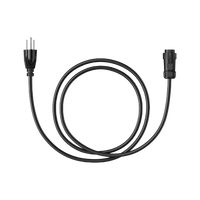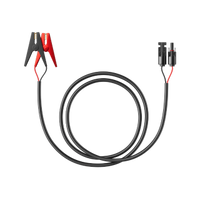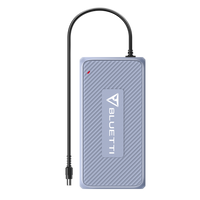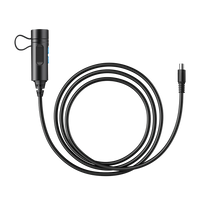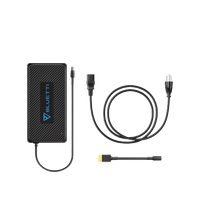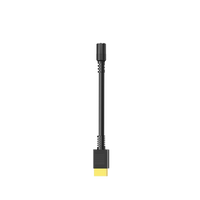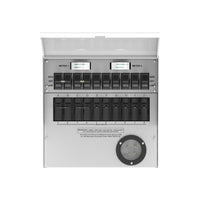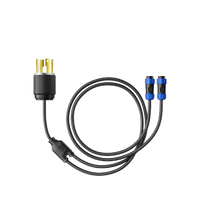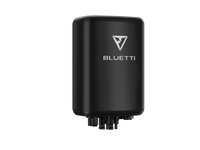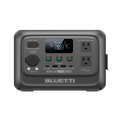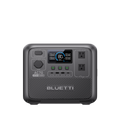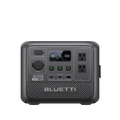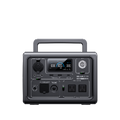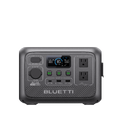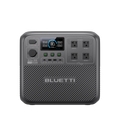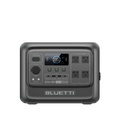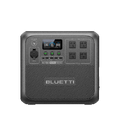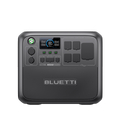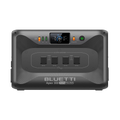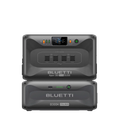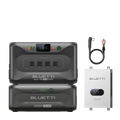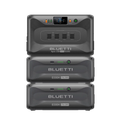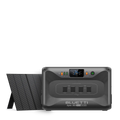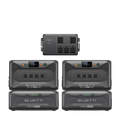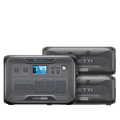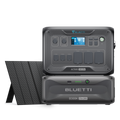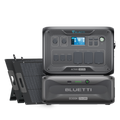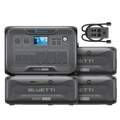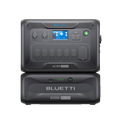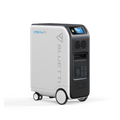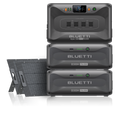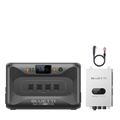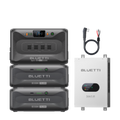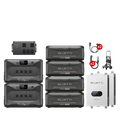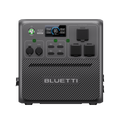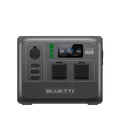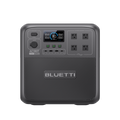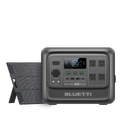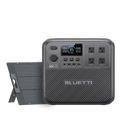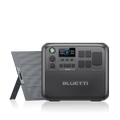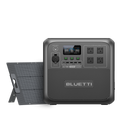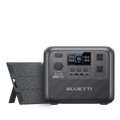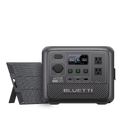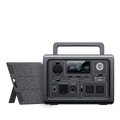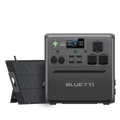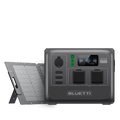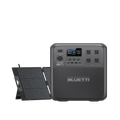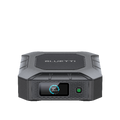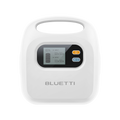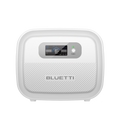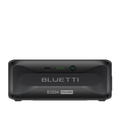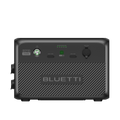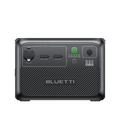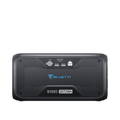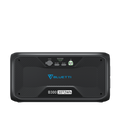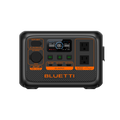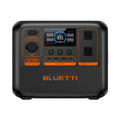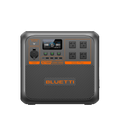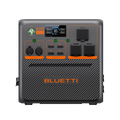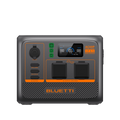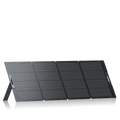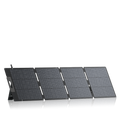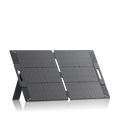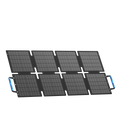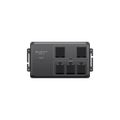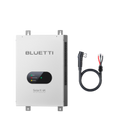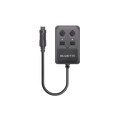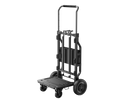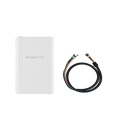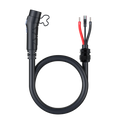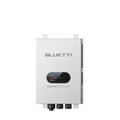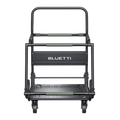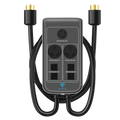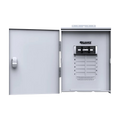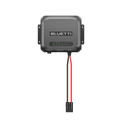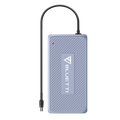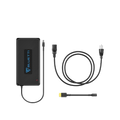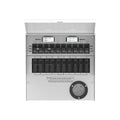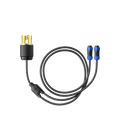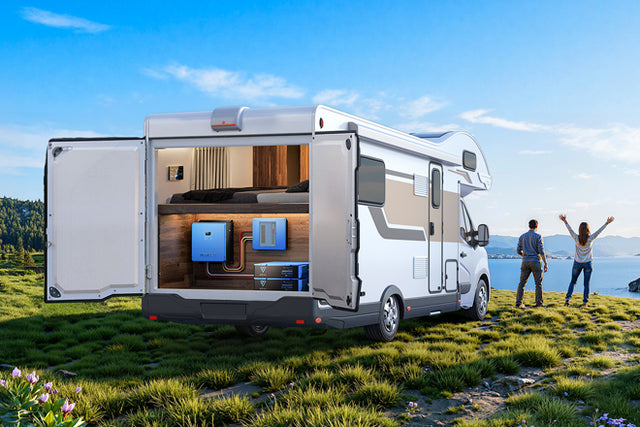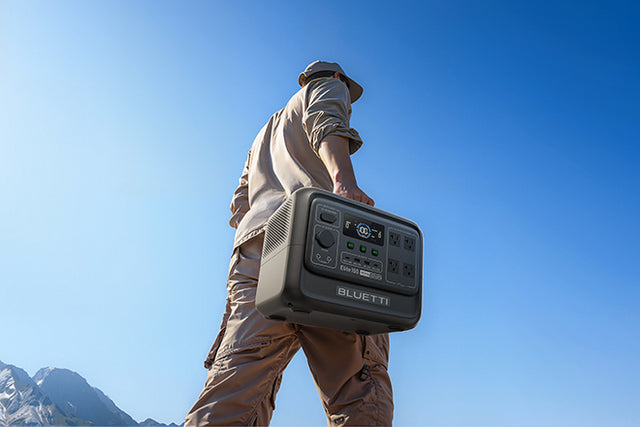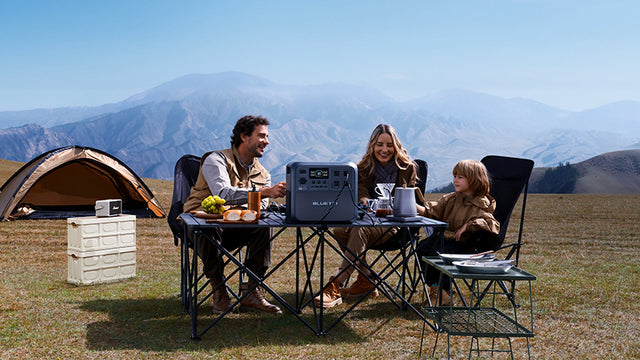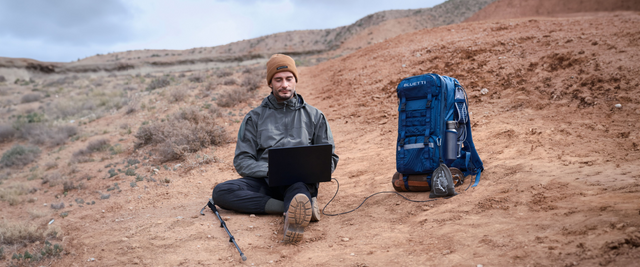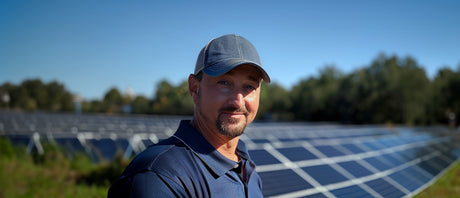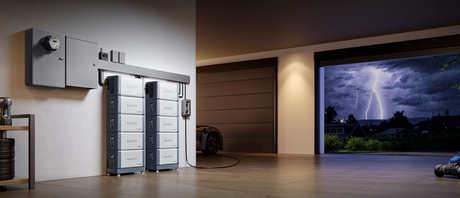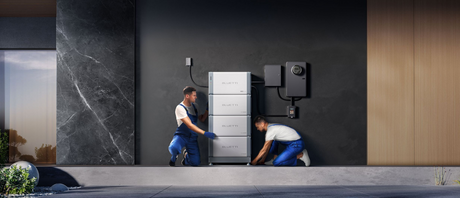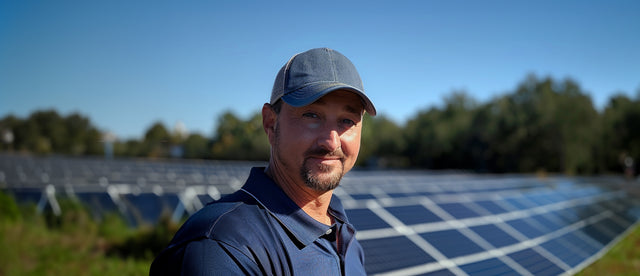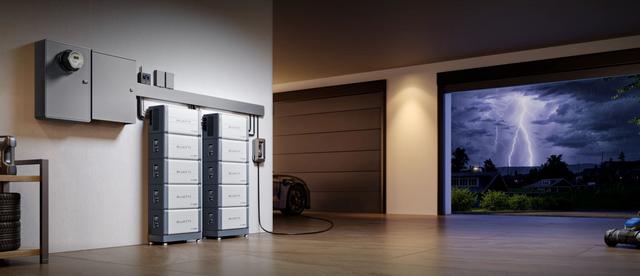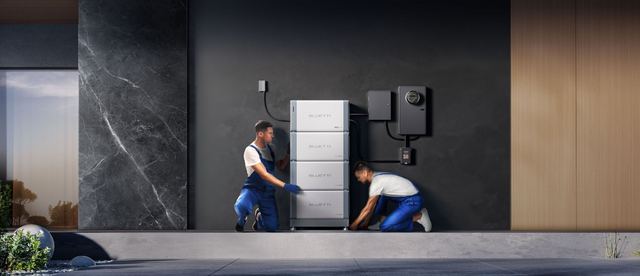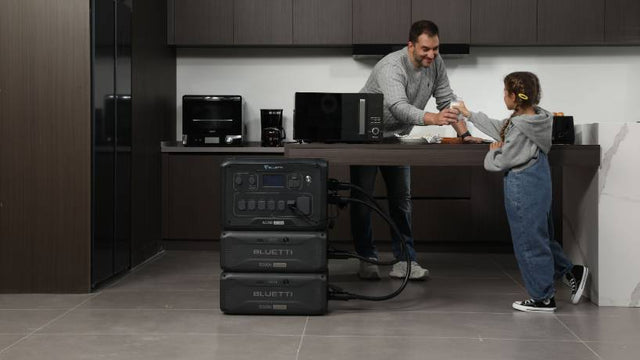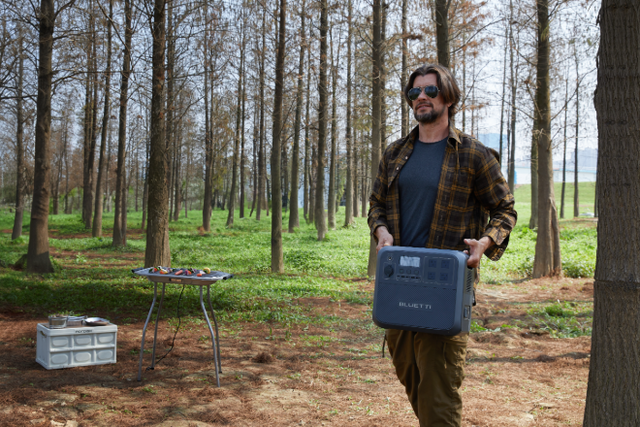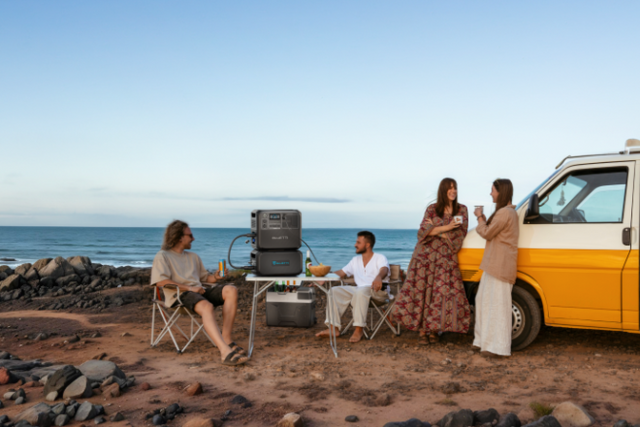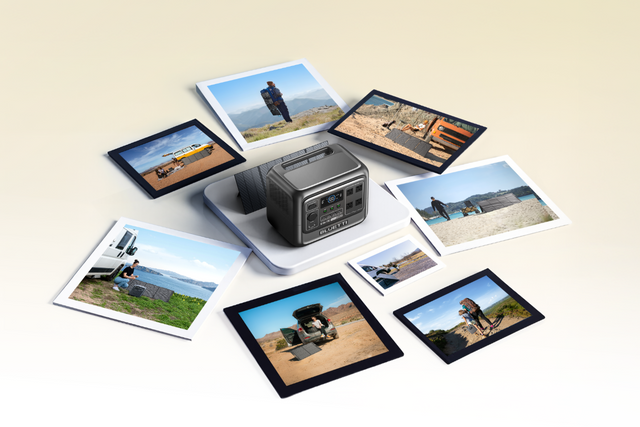Your cart is empty
Shop our productsSolar generators power your lights and appliances even during blackouts. They use solar energy stored in their batteries to power and charge your devices.
Understanding a solar generator's kWh rating is crucial for determining how many devices it can power. This article explores how you can convert kWh to watts to better understand solar generator specifications.
Watts, Kilowatts, and Kilowatt-Hour

There are many energy units used to measure how much power your devices consume. Among them are kWh (kilowatt-hour) and watts.
What is a Watt?
A watt is the rate of power flow. The formula for power in watts is:
Watts (W) = Volts (V) × Amps (A).
Some of the most common wattage ratings include:
|
Appliance |
Typical Wattage Range (W) |
Energy Use (kWh) |
|
Light Bulb |
40 – 100 W |
0.04 – 0.1 kWh/hour |
|
Coffee Maker |
500 – 1,000 W |
0.5 – 1.0 kWh/hour |
|
Electric Kettle |
1,500 – 3,000 W |
~0.12 – 0.15 kWh per boil |
|
Air Conditioner |
1,000 – 2,000 W |
1.0 – 2.0 kWh/hour |
|
Electric Oven |
2,000 – 3,000 W |
2.0 – 3.0 kWh/hour |
Higher wattage ratings result in greater energy consumption. As such, if you use high-wattage appliances often, you will get a higher electricity bill, while using low-wattage appliances reduces your bill..
What is a Kilowatt?
A kilowatt is a unit of power equal to 1,000 watts. As such, a 2-kilowatt appliance uses 2,000 joules of energy per second. Most companies that produce household electronics will use kilowatts to measure the devices' power output.
How Many Watts in a Kilowatt?
So, how many watts are in a kilowatt? Well, there are 1000 W in a kilowatt. You can use the following formula to calculate watts in a kilowatt:
Watts = kilowatts x 1000
If a device has a 3-kilowatt power rating, its watts will be 3 x 1000, which is 3000 W.
What Is a Kilowatt-Hour?
kWh is the measure of one kilowatt that an electronic device uses per hour. For example, if your heater's rating is 1000 watts for one hour, it consumes 1 kWh of energy.
Your electricity bill will often show your monthly usage in kilowatt-hours, and the more you use, the higher your bill will be. You should, however, not confuse kWh with kW.
Is there a difference between kWh and kW?
kW (kilowatt) measures the instantaneous rate of power usage, while kWh measures the total energy consumed over time. Appliances vary in power usage, and their energy consumption is measured in kWh.
How Do I Calculate the Energy Use of an Appliance? (In kWh)
So, if you have a low-power 100-watt TV, it would take 10 hours to hit 1 kWh. On the other hand, it takes 30 minutes for a 2,000-watt gadget to reach 1 kWh. It means if you run high-power devices frequently, you may reach 1 kWh quickly.
You can use this formula to calculate the kilowatt-hours used by a device:
kWh = (Watts × Hours) ÷ 1,000
So, how do you convert kWh to watts? Let's find out.
To convert kilowatt-hours to watts, use the following formula:
Watts (W) = (kWh × 1000) ÷ Time (hours)
For example, an oven that uses 3 kWh in 1 hour has a power rating of 3,000 watts (3 × 1,000).
Using the kWh to Watts Calculator
Alternatively, use a kWh-to-watts calculator by entering the kWh value and time duration. There are many to choose from, but they all perform the same calculations. All you need to do is feed it with the kWh value and the time duration, and it will do the rest.
Related article: kW vs. kWh: Do You Know the Difference?
Why Converting Matters for Solar Generators
Converting kWh to watts or vice versa helps you understand the following aspects of a solar generator:
Understanding Energy Production and Consumption
Most solar generators are rated in watts or kilowatts. This allows you to understand how much power it can produce, meaning you can know which appliances to run with it. You can also gauge the number of solar panels you'll need to ensure optimal energy production.
For Evaluating System Performance
By calculating kWh from watts and usage time, you can estimate your solar panels' energy production over a day, month, or year. As such, you can compare the expected performance over the same period. This allows you to identify inefficiencies and issues with the PV system.
Designing Solar Systems

As you'd expect, an efficient solar system design requires you to understand the energy requirements of your home. By converting from watts to kilowatts or vice versa, you can determine the peak power and demand of your appliances. Besides, it ensures that the solar generator can produce enough energy to meet your needs.
Helps Determine Battery Size
Another reason why converting kWh to watts matters is to determine the solar battery storage size. If the power required is high, you'll require a large system, and vice versa. Additionally, if you have an off-grid system, converting will help you buy the best solar batteries so you can power your appliances throughout the year.
Comparing Solar Generators
Well, if you are buying a solar generator online, you'll want to compare options from several manufacturers. Dealing with watts, kWh, and kW can be inconsistent, not to mention annoying. This is where converting the ratings into a single unit comes into play. It helps you compare quickly and effectively.
How Many Watts Should a Solar Generator Have to Run a House?
Several factors determine the wattage required to power your home. They include the following:
Daily consumption
First, you need to determine your daily energy consumption, ideally in kWh. Fortunately, you can use an energy monitoring device to get an accurate estimate. To calculate daily consumption, you'll need to compile a list of devices and appliances.
For each device, you need to determine the power rating in watts. You can find this information in the device or user manual. If written in kWh, convert it into watts using the provided formula.
From this, you can calculate daily usage by estimating the average number of hours each device will run. Finally, multiply each device's watts by the number of hours it will be running, then sum up to get the total daily consumption.
Solar System Efficiency
As you'd expect, solar systems do not run with 100% efficiency. Solar panels do not always capture sunlight, and batteries might become faulty. As such, it is recommended to consider the efficiency of the system so you can determine how many solar generators you'll need.
Sunlight Availability
Sunlight availability also affects how much power your solar generator will produce. If you are in a state with more sunlight, your generator might produce ample watts for your home. You may require extra solar panels if you live in an area with less sunlight to meet your energy needs.
Size of the Generator
A small solar generator may lack the capacity (kWh) or power output (watts) to run your house. A larger generator with higher kWh capacity can power your home for longer.
As you can see, there's no one-fits-all answer since the watts required will depend on factors such as sunlight, daily consumption, and the size of the generator. In short, you need to estimate how much your appliances will use to calculate how many watts your solar battery should produce.
BLUETTI Solar Generators to Power Your Home
BLUETTI Elite 200 V2 Portable Power Station

If you're looking to run your essentials on clean solar energy, the BLUETTI Elite 200 V2 is the next-generation portable power solution. With a capacity of 2,073.6Wh and an output of 2,600W (peaking at 5,200W), it packs enough strength to power everything from laptops and fridges to heavy-duty appliances like kettles, heaters, and microwaves.
Thanks to its advanced LiFePO₄ battery (6,000+ cycles to 80%), you'll get an impressive lifespan of up to 17 years of regular use. It is far more reliable than standard lithium-ion stations.
The TurboBoost fast-charging system ensures you go from 0 to 80% in just 1 hour via AC or around 2.4 hours via solar input (1,000W max). Plus, with pass-through charging, you can keep your devices powered while the unit itself recharges.
Despite its robust output, the Elite 200 V2 remains portable and user-friendly, weighing only 24.2kg (53.4lbs) with dual handles for easier carrying. Built-in WiFi + Bluetooth app control lets you monitor and optimize performance remotely.
BLUETTI Elite 100 V2 Portable Power Station

Another option is the BLUETTI Elite 100 V2, a compact yet powerful portable power station. This unit offers a 1,024Wh LiFePO₄ battery (4,000+ cycles, 10+ years lifespan) paired with a 1,800W output (3,600W peak, 2,700W lifting mode), enough to keep your essential gadgets running for days.
Whether you need to charge your laptop, phone, or multiple devices simultaneously (11 ports, including 140W USB-C), this power station has you covered.
With it, you can enjoy over 50 hours of lighting (10W), 14+ hours of refrigeration (50W), and seamless UPS backup (<10ms) for sensitive electronics.
Thanks to TurboBoost™ fast charging (80% in 45 mins, full in ~70 mins) and 1,000W solar input, you can recharge quickly at home, outdoors, or entirely off-grid.
And with its lightweight 25 lb design, ultra-quiet 30dB operation, and WiFi/Bluetooth app control, the Elite 100 V2 is perfect for camping, RV life, off-grid cabins, or emergency backup.
Final Thoughts
kWh measures the energy an appliance uses over time, which can be converted to watts using the formula Watts = (kWh × 1,000) ÷ Hours. If you want to power large appliances, you'll have to buy a solar generator with a high kWh rating.
FAQs
How do I know how many devices my solar generator can run?
Multiply the generator's kWh by 1,000 to get watt-hours, then divide by the device's wattage to estimate runtime. Example: a 2 kWh generator runs a 100W bulb for ~20 hours.
Why does wattage matter in solar generators?
kWh shows stored energy, but watts show how much power can be delivered at once. High-watt devices like kettles need strong output.
Can kWh help compare solar generators?
Yes. A 1 kWh unit suits lights and laptops, while larger appliances like ACs or kettles need higher kWh and watt ratings.
Shop products from this article
Be the First to Know
You May Also Like

Deadly Flooding Devastates U.S. South and Midwest — What You Need to Know

BLUETTI Teams Up with Leave No Trace to Power Sustainable Outdoor Adventures

